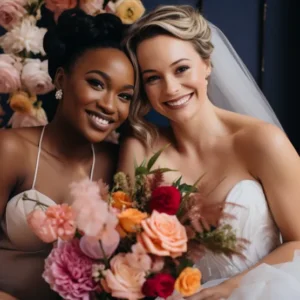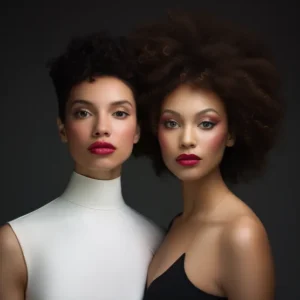In recent years, the beauty industry has been undergoing a transformative shift towards inclusivity, recognizing and celebrating the diverse needs of individuals from all walks of life. One significant aspect of this movement is the increasing focus on creating makeup products and techniques that cater to people with disabilities. This article delves into the strides made in making beauty accessible to everyone, challenges faced by the industry, and the empowering potential of makeup for people with disabilities.
The Importance of Inclusive Beauty
Historical Perspectives
- Limited Accessibility: Historically, makeup products and application techniques were not designed with diverse needs in mind, often excluding people with disabilities from participating in the beauty routine.
- Changing Narratives: A shift in societal attitudes and a growing awareness of inclusivity have prompted the beauty industry to reassess its approach, leading to a more comprehensive understanding of diverse beauty needs.
Empowering Makeup for People with Disabilities
Adaptive Products and Tools
- Inclusive Makeup Tools: The development of adaptive makeup tools, such as ergonomic brushes and applicators, facilitates easier application for individuals with dexterity challenges.
- Accessible Packaging: Beauty brands are redesigning packaging to be more user-friendly, considering factors such as grip, ease of opening, and braille labeling for inclusivity.
Inclusive Techniques and Tutorials
- Accessible Makeup Education: Online platforms and beauty influencers are incorporating accessible makeup tutorials, providing step-by-step guidance tailored to various abilities.
- Voice-Controlled Technology: The integration of voice-controlled technology allows individuals with mobility impairments to control beauty devices and access makeup tutorials through voice commands.
Challenges and Progress
Limited Representation
- Underrepresentation in Media: Individuals with disabilities continue to be underrepresented in mainstream beauty campaigns and media, contributing to the perpetuation of narrow beauty standards.
- Changing Perceptions: Breaking down societal stereotypes and misconceptions about beauty and disability is an ongoing challenge that requires continued advocacy and education.
Industry Collaboration and Innovation
- Collaboration with Experts: Collaborations between beauty brands and experts in accessibility and disability ensure that products are designed with the input of those who understand the unique challenges faced by the community.
- Innovative Technological Solutions: Ongoing innovation in beauty technology, such as smart mirrors and AI-assisted makeup applications, presents opportunities for creating more inclusive beauty experiences.
Empowering Self-Expression
Boosting Confidence
- Psychological Impact: The psychological impact of makeup on individuals with disabilities is profound, offering a tool for self-expression and boosting confidence in one’s appearance.
- Creative Expression: Makeup becomes a form of creative expression, allowing individuals to showcase their personality and artistic flair, regardless of physical abilities.
Community Support and Connection
- Online Communities: The rise of online communities and social media platforms creates spaces for individuals with disabilities to share tips, product recommendations, and experiences related to accessible beauty.
- In-Person Workshops: Beauty workshops and events tailored to individuals with disabilities foster a sense of community, providing hands-on experiences and personalized guidance.
Future Directions
Advocacy for Representation
- Campaigning for Diversity: Advocacy efforts continue to push for increased representation of people with disabilities in beauty campaigns, challenging stereotypes and promoting a more inclusive beauty industry.
- Inclusive Beauty Standards: Shifting societal beauty standards to encompass a broader definition of beauty includes embracing and celebrating diverse abilities as an integral part of the spectrum.
Policy Changes and Accessibility
- Accessible Beauty Spaces: The push for accessible beauty spaces, including makeup stores and salons, involves advocating for physical spaces that accommodate various mobility needs.
- Universal Design Principles: Integrating universal design principles in beauty product development ensures that inclusivity is embedded in every aspect, from formulation to packaging.
Conclusion
Empowering beauty for people with disabilities is a journey marked by progress, challenges, and the transformative impact of inclusivity. As the beauty industry continues to evolve, it is crucial to recognize the unique needs of individuals with disabilities and work towards dismantling barriers to self-expression. Through accessible products, inclusive education, and increased representation, the beauty industry has the power to redefine beauty norms and foster a more empowering and inclusive environment where everyone feels seen, valued, and beautiful.



